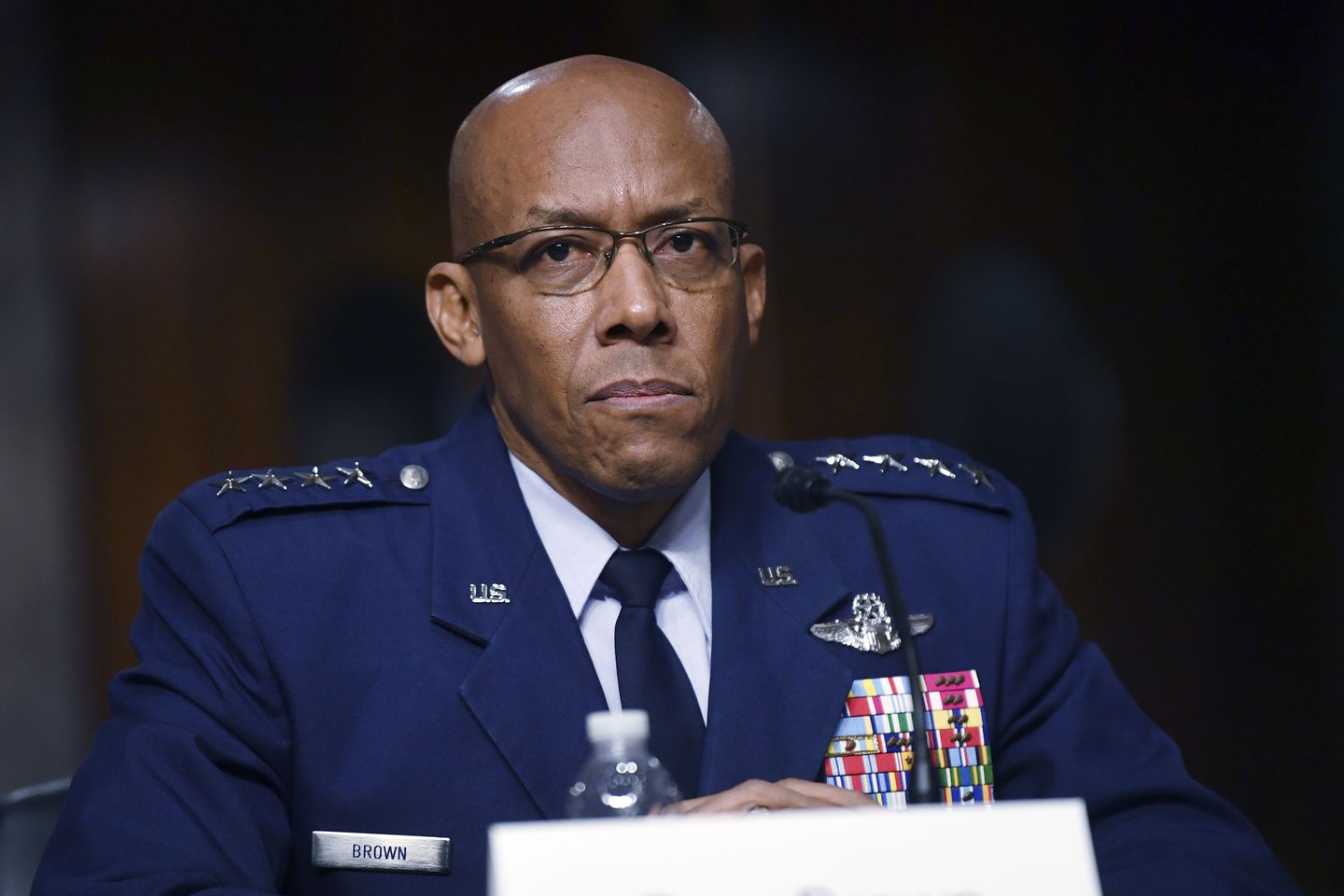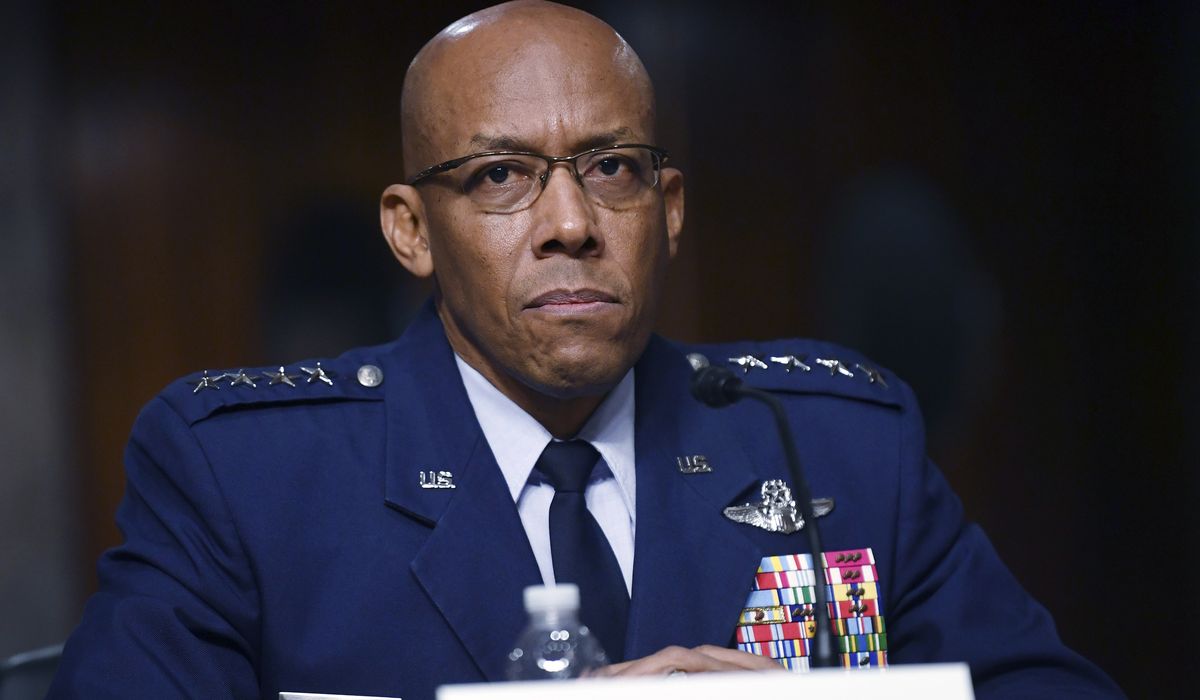

After more than 20 years focused on the Middle East, the U.S. Air Force must evolve if it is to stay relevant on future battlefields against near-peer adversaries like China and Russia, one of the service’s top officials acknowledged Wednesday.
Air Force Chief of Staff Gen. Charles Q. Brown Jr. said he began thinking about new missions for the Air Force even while he was the air component commander for U.S. Central Command. The abrupt end of the mission in Afghanistan marked a symbolic close to two decades focused fighting a global war on terror against smaller states and stateless terror movements.
“The fight we were in was not going to be the fight we were going to be in in the future,” Gen. Brown said Wednesday at a discussion hosted by the Hudson Institute.
The U.S. military is facing challenges it hasn’t encountered since the end of the Cold War. China is a rising economic powerhouse with ambitions to control large swaths of the Indo-Pacific region. Russia’s invasion of neighboring Ukraine is the largest such action since the end of World War II. Meanwhile, countries like Iran and North Korea launch attacks on neighbors and develop sophisticated missiles capable of striking targets thousands of miles away.
The renewed focus on traditional “great power” conflicts has sparked a re-thinking across the U.S. military, with the Navy, the Marine, the Army and the new Space Force all forced to re-orient and re-scale to meet a very different kind of mission. The culture shock for the Air Force could be particularly intense.
For years, the U.S. owned the skies over countries like Iraq and Afghanistan and could launch air missions against targets with near-complete impunity. That isn’t likely to be the case against a country like China, which has rapidly expanded and improved its offensive and defensive aviation assets in recent years.
“You would actually have to earn air superiority. You wouldn’t just walk in and have it,” Gen. Brown said.
Gen. Brown is trying to guide the Air Force through a generational change while coping with challenges such as an aging fleet of fighter planes and convincing potential recruits to sign on the dotted line. The service also wants to unload aging Cold War-era systems like the A-10 Thunderbolt tank killer.
“It’s forcing us to really think hard about how we make those changes,” he said. “We’re going to really have to think differently about how we approach things. We have to act differently and get the resources and capabilities to fight differently as well.”
U.S. forces sent to Iraq and Afghanistan were often assigned to bases boasting conveniences like well-stocked gyms, cafeterias and regular Wi-Fi. That isn’t likely to be repeated in future conflicts, Gen. Brown said.
“We’re going to go to places in the future where you may have to start in some cases from scratch,” he said. “You may not stay in that location because of how dynamic the threat is.”
Air Force leaders also should be willing to provide more information to their troops, Gen. Brown said, calling it “about trust and empowering our airmen.” They also need a solid working relationship with the defense industry — both mainline contractors and small tech firms that offer products the military could use.
“We have to break out of some of these bureaucratic processes to be able to adapt ourselves and to be able to move fast,” Gen. Brown said.
He remains a strong proponent of the Air Force’s doctrine of “Agile Combat Employment,” designed to increase survivability while still generating combat power. Future Air Force missions could see a package of F-22 fighters operating in different areas with a light logistics presence to support them.
“Having the right mix of capabilities and the right mix of airmen doesn’t require you to bring everything,” Gen. Brown said. “We often find that our airmen can do much more than we ask them to do.”
